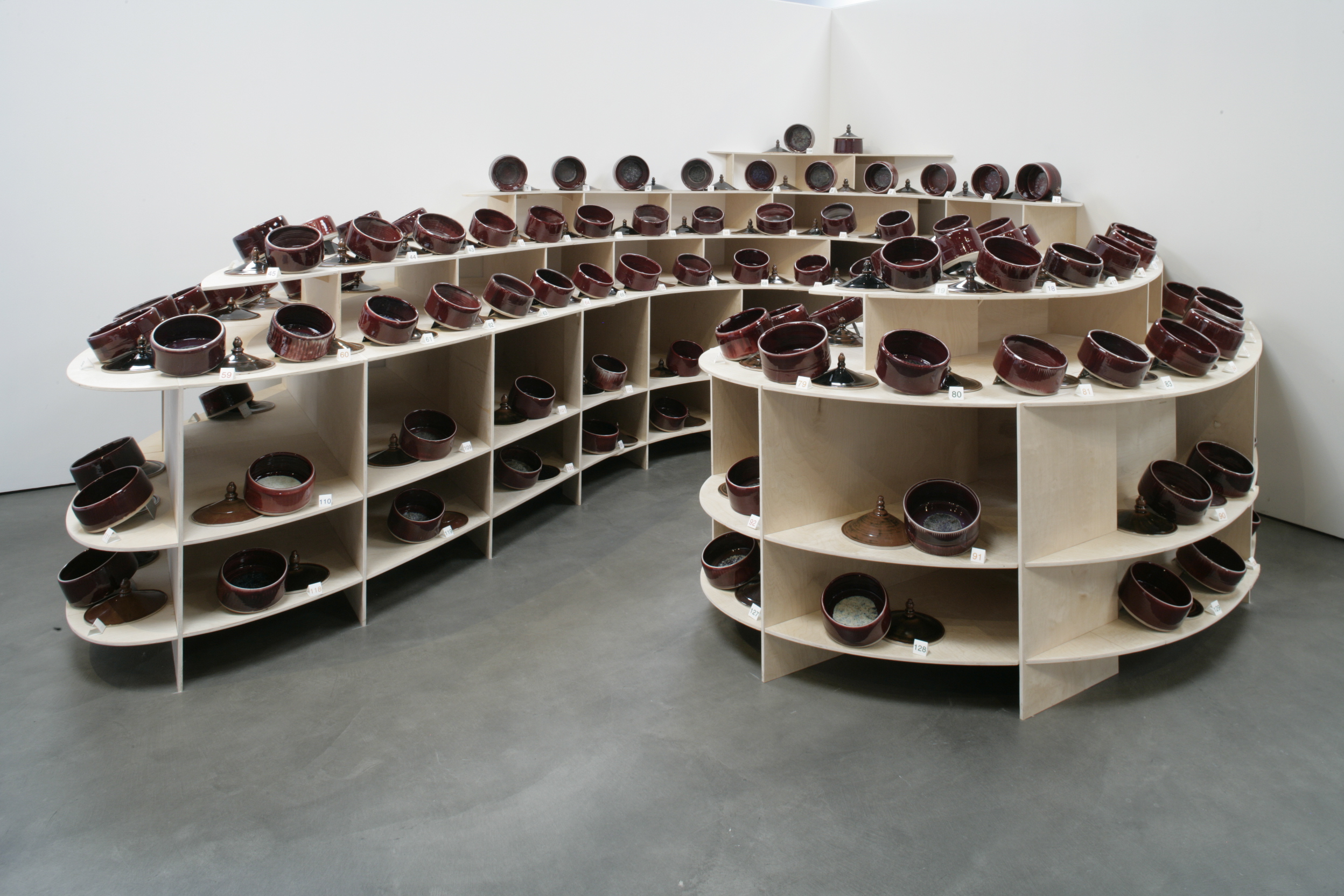During the Tubbs Fire in October 2017, the ash from my Santa Rosa community’s kitchens, living rooms, and bedrooms fell on my home. It reminded me of looking out my childhood kitchen window during the first flurries of late fall in the North East, a signal that change was imminent.
But this change was not seasonal. Homes went up in flames. The loss of a family’s kitchen is the loss of a safe space where we cook, bicker, argue about doing the dishes, make a mess and clean it up. Without these spaces we can drift into a dark vacuum where a community fractures and dissolves.
But is all lost? Cream poured into coffee will reach a point of equilibrium and both are changed to create something new. Wood Ash drifts onto the pots during the firing, melting the silica on the surface. The two elements flow into one another combining to create a new material, glass. The disorder of entropy is a universal constant that can be sped up by heat.
During the fires, I kept wondering If entropy is demonstrated to a willing participant, can the sensation of loss be mitigated and help recovery? By December 2017, 100 participants had delivered their ashes to my front porch.
The final Sonoma Ash Project followed this recipe to create the objects seen here:
1. Base vessel; 6lbs porcelain, thrown on the potter’s wheel
2. Lid; 3 ½ to 4lbs porcelain, thrown on the potter’s wheel
3. Bisque fire to 1950 degrees f.
Glazing for 130 Participants: Mix 40,000 grams batch each of Cone 10 of Ox Blood & Tenmoku Glazes
1. Wash vessels & lids to remove dust
2. In a separate large bowl dilute Ox Blood glaze by 25% with water
3. Measure 50ml of diluted Ox Blood glaze into a clean mixing cup
4. Add 2 ½ Tablespoons of ash and mix with a fork until smooth
5. Using a round form pour mixture into the middle of the base vessel and allow the water to seep in for one minute and remove the form. (This should create a patty ¼” thick).
6. When the patty is completely dry, glaze inside and out with Ox Blood glaze (not diluted)
7. Glaze lids separately with Tenmoku
8. Fire to 2350 Degrees in a reduction atmosphere then allow cooling for 72 hours (repeat as necessary)
Each participant will be gifted an object, glazed with the ashes from their homes, at the end of the exhibition.
The vessels are based on the Fountaingrove Round Barn and dedicated to Kanaye Nagasawa. This structure was chosen for its iconic place in Santa Rosa’s collective mind and geographic location in the Tubbs fire. It was built in 1899 by John Clark Lindsay, who was hired to by Kanaye Nagasawa who reportedly designed the structure that became a landmark.* Nagasawa experienced displacement throughout his life. At age 13 he was sent to be educated in Great Britain, the country that bombed his childhood city of Kagoshima in 1863. He was the first Japanese student at Cornell University but under the 1913 Anti-Alien Law forbidden to own land in California or pass on his life’s work on to his heirs. Kanaye Nagasawa’s ashes now rest in Santa Rosa’s sister city Kagoshima Japan, his hometown.
About StudioC2 founder, Gregory Roberts
In 1992, Gregory Roberts was the first artist to utilize honeycomb ceramics to create art, bringing a completely unique material to the clay and glass world, which was first shown at Dorothy Weiss Gallery in San Francisco. He went on to pursue a Masters of Fine Arts at Mills College and was offered a San Francisco Art Dealers Association Introductions Exhibition at Dorothy Weiss for his MFA thesis exhibition titled Working Late. He has been an artist -in-residence at the Oregon School of Arts and Crafts, Portland and had his first solo exhibition, Small Business at Butters Gallery in Portland, OR in 1995. He has been on the faculty of the Department of Art at Sonoma State University for 18 years where he has served as Chair of the Department of Art & Art History from 2010-2013 & 2016-2018.
“My work in solo and group exhibitions seeks to marry ancient ceramic traditions with contemporary technological advances”.
contact
STUDIOGR7@GMAIL.COM
Gregory Roberts ~ StudioC2

